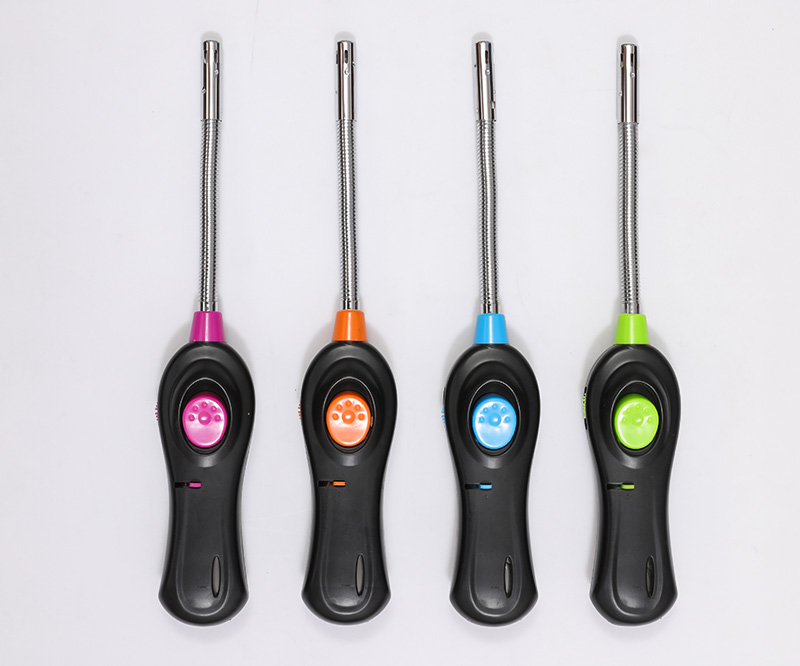What are the definitions of lighter terms?
Lighters have special manual incineration equipment. The fuel is composed of petrochemicals and is usually used to light cigarettes and pipes. It can also be used to light paper, wicks, candles, lanterns or other flammable materials.
Note: The lighter manufacturer cannot be used as a candle, flashlight or other equipment that burns for a long time.
2. Manufacturers of liquid gas lighters such as lighters have significant outlet pipes. The internal fuel composition is liquid hydrocarbons, such as hexane. The standard vapor pressure is 24°C and cannot exceed 34.5kpa.
3. The standard pressure of gaseous lighter propane is over 104kpa at 24℃.
4. Manufacturers of gaseous lighters, such as post-mix lighters, mix air and fuel for incineration after incineration.
5. The fuel gas of the gaseous lighter manufacturers such as the front-mix lighter is mixed with air and then burned.
6. Disposable lighters are filled with fuel when manufactured by manufacturers of disposable lighters, and cannot be refilled.
7. Rechargeable lighters. Manufacturers of such lighters can recharge their external gas tanks or insert new fuel tanks.
8. Adjustable lighters, manufacturers of such lighters provide equipment that can freely adjust the flame height.
9. The manufacturer of such lighters does not provide equipment that can adjust the flame height, and the incineration height is preset by the manufacturer.
10. Pipe lighters that can be automatically adjusted. This type of lighter manufacturer provides a device that can automatically increase the flame height from upright to slanted. This device is specifically designed for pipes.
11. Self-extinguishing lighters, manufacturers of lighters like self-extinguishing lighters are required to continue their purposeful and automatic actions after they are ignited to maintain the flame. Once the action is stopped, the flame is automatically extinguished.
12. Non-self-extinguishing lighters. Manufacturers of such lighters do not require intentional or automatic actions to maintain the flame, but actions are required to extinguish the flame.
13. Flame height: the linear interval from the head of the shield to the top of the visible flame. If there is no shield, it refers to the linear interval from the end of the exposed wick or the top of the air box valve port to the top of the visible flame.
14. Windshield: Enclose the gas box valve port of the gas lighter manufacturer or the air duct of the liquid lighter manufacturer in whole or in part.
15. Air box valve: a component used by the lighter manufacturer to control the release of gas.
16. Outlet: The position where the fuel gas is released.
17. Jumping fire: different flame heights under continuous burning conditions.
18. Continue to spontaneous combustion: non-human deliberate action causes the flame to extend, such as falling and burning and continuing to burn.
19. Explosion and splashing: the droplet burning phenomenon in which the unconcentrated liquefied gas from the gas lighter manufacturer jumps and separates from the main flame.
20. Flame: Under normal lighting conditions, it is visible or slightly dim and generates heat, often accompanied by luminous fuel burning.
twenty one. Lighting: Use the built-in incineration equipment and fuel release system of the lighter manufacturer to ignite the flame in a specific way.
Related Suggestion :
BUTANE HOME PLASTIC+METAL HOSE IGNITER OQ-9008W
